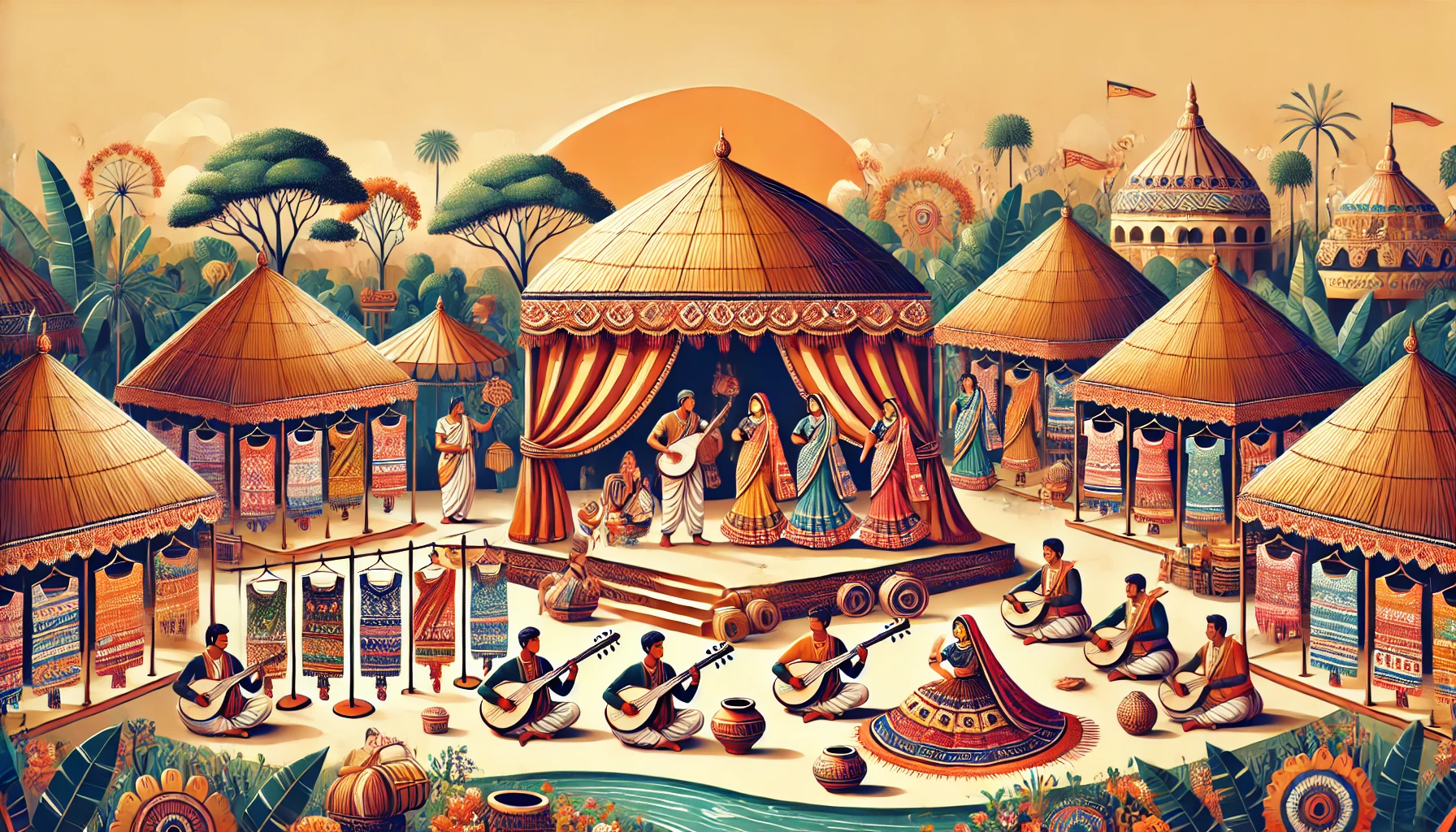
Cultural Extravaganza: The Charm of Poush Mela and Its Artisan Stalls
Poush Mela, held annually in Shantiniketan, West Bengal, is a vibrant celebration of Bengal’s rich cultural heritage. Founded by Maharshi Debendranath Tagore in 1894, this iconic fair blends tradition, art, and music with the rustic charm of rural Bengal. From Baul performances to artisan stalls showcasing exquisite handicrafts, Poush Mela is a treasure trove of experiences that beautifully captures the spirit of Bengal.
The Cultural Significance of Poush Mela
Poush Mela marks the harvest season and commemorates the adoption of the Brahmo religion by the Tagore family. Over the years, it has grown into a vibrant festival that attracts people from across India and abroad.
Key elements include:
- Baul Performances: The soulful music of Bengal’s wandering minstrels, the Bauls, is an integral part of Poush Mela. Their philosophical songs, accompanied by simple instruments like the ektara, mesmerize audiences.
- Folk Dances: Traditional performances such as Chhau and Santhali dances add rhythm and vibrancy to the fair.
- Craft Exhibitions: Artisans from across Bengal and neighboring states gather here to showcase their handcrafted products, making the fair a haven for art enthusiasts.
What to Explore at Artisan Stalls
The artisan stalls at Poush Mela are a testament to Bengal’s unparalleled craftsmanship. Here are some must-buy items to support local artisans:
- Handwoven Textiles:
- Kantha-stitched sarees and dupattas.
- Soft muslin and tussar silk fabrics.
- Terracotta Crafts:
- Intricate figurines, jewelry, and home decor items.
- Dokra Art:
- Metal crafts featuring tribal motifs, perfect for unique jewelry or showpieces.
- Leather Goods:
- Shantiniketan-style embossed leather bags and wallets.
- Pottery and Clay Art:
- Decorative items and traditional clay utensils.
- Pithas (Traditional Bengali Sweets):
- Handmade rice cakes, including patishapta, bhapa pitha, and dudh puli, are popular delicacies sold by local vendors.
Planning Your Visit to Poush Mela
Here’s how you can make the most of your visit to Poush Mela:
1. Best Time to Visit:
Poush Mela typically takes place in late December. Arrive on the first two days to experience the traditional inauguration ceremony and Baul music performances.
2. Getting There:
- By Train: Take a train from Howrah or Sealdah to Bolpur, followed by a short auto-rickshaw or e-rickshaw ride to Shantiniketan.
- By Road: Drive from Kolkata (approx. 3-4 hours) or take a bus to Bolpur.
3. Accommodation:
Book accommodations in advance, as nearby hotels and guesthouses fill up quickly during the mela. For an authentic experience, consider staying in a homestay.
4. Tips for Visitors:
- Wear comfortable footwear for walking through the sprawling fairgrounds.
- Carry cash for purchases, as many artisans may not accept digital payments.
- Respect local traditions and avoid littering to maintain the eco-friendly ethos of the fair.
Why Supporting Local Artisans Matters
When you buy from Poush Mela’s artisan stalls, you:
- Support Traditional Crafts: Ensure the continuation of centuries-old art forms that are often passed down through generations.
- Promote Sustainable Practices: Many artisans use eco-friendly materials and processes, contributing to a sustainable future.
- Boost Rural Economies: Your purchase directly impacts the livelihoods of rural artisans and their families.
Conclusion
Poush Mela is more than just a fair; it’s a cultural extravaganza that encapsulates the essence of Bengal’s artistic and rural traditions. Whether you’re savoring pithas, listening to Baul songs, or exploring the exquisite craft stalls, every moment at Poush Mela is a celebration of heritage and community. Plan your visit, immerse yourself in the vibrant festivities, and take home a piece of Bengal’s rich legacy by supporting its talented artisans.



